How to have the best experience with the first Witcher game in 2022
The tips, tricks, and fixes that you'll need to know in order to survive the original Witcher game.
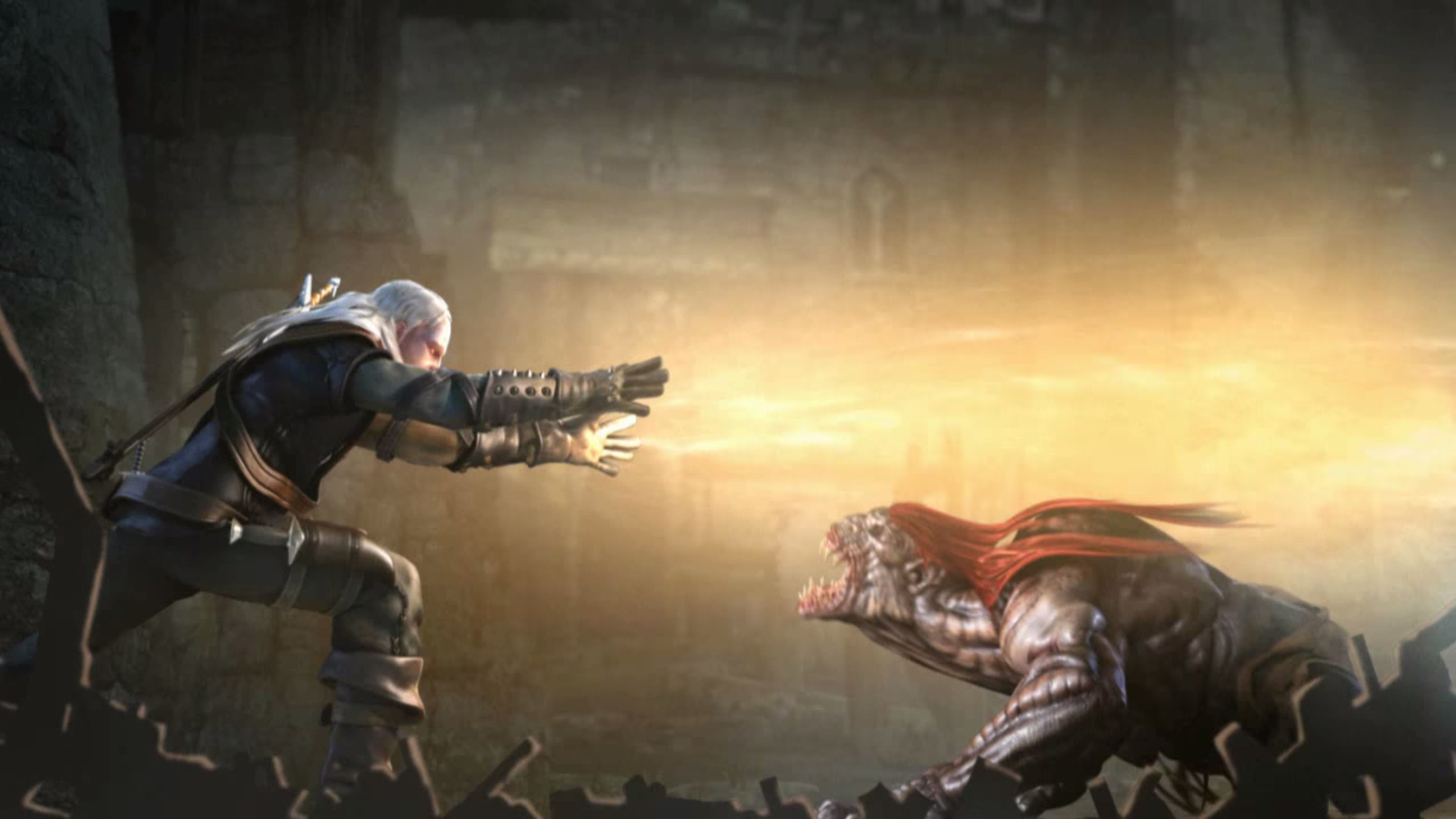
CD Projekt Red's original The Witcher RPG from 2007 is getting on in years, but the Witcher universe itself just keeps growing. We're due for more Netflix shows, several more games from CDPR, and other adaptations likely too. The first game is even getting a remake, CDPR has announced. Until that remake arrives in several years, though, The Witcher: Enhanced Edition from 2008 is where you'll find the roots of Geralt's current popularity.
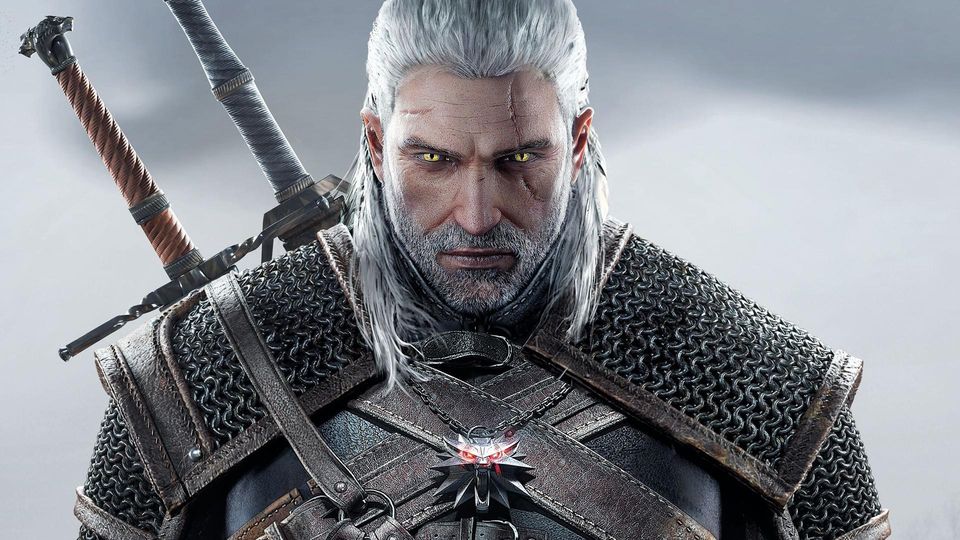
The Witcher 4: What we know
The Witcher season 3: Trailers and cast
Witcher 3 mods: Good hunting
The Witcher books: Where to start
I'm not gonna lie: The Witcher shows its years. I started the series there myself, stubbornly, playing the trilogy in order, and nowadays I typically caution friends to start with the newest game and only head back to the original once they're well invested in the world. My first adventure with amnesiac Geralt was rife with bugs, crashes, and freezing and I eventually made it to the end fueled primarily by spite. There's a great RPG buried under this old mess, though—let me help you find it.
Here's my guide to making your own journey back in Witcher history a bit easier than mine was.
Buy this version
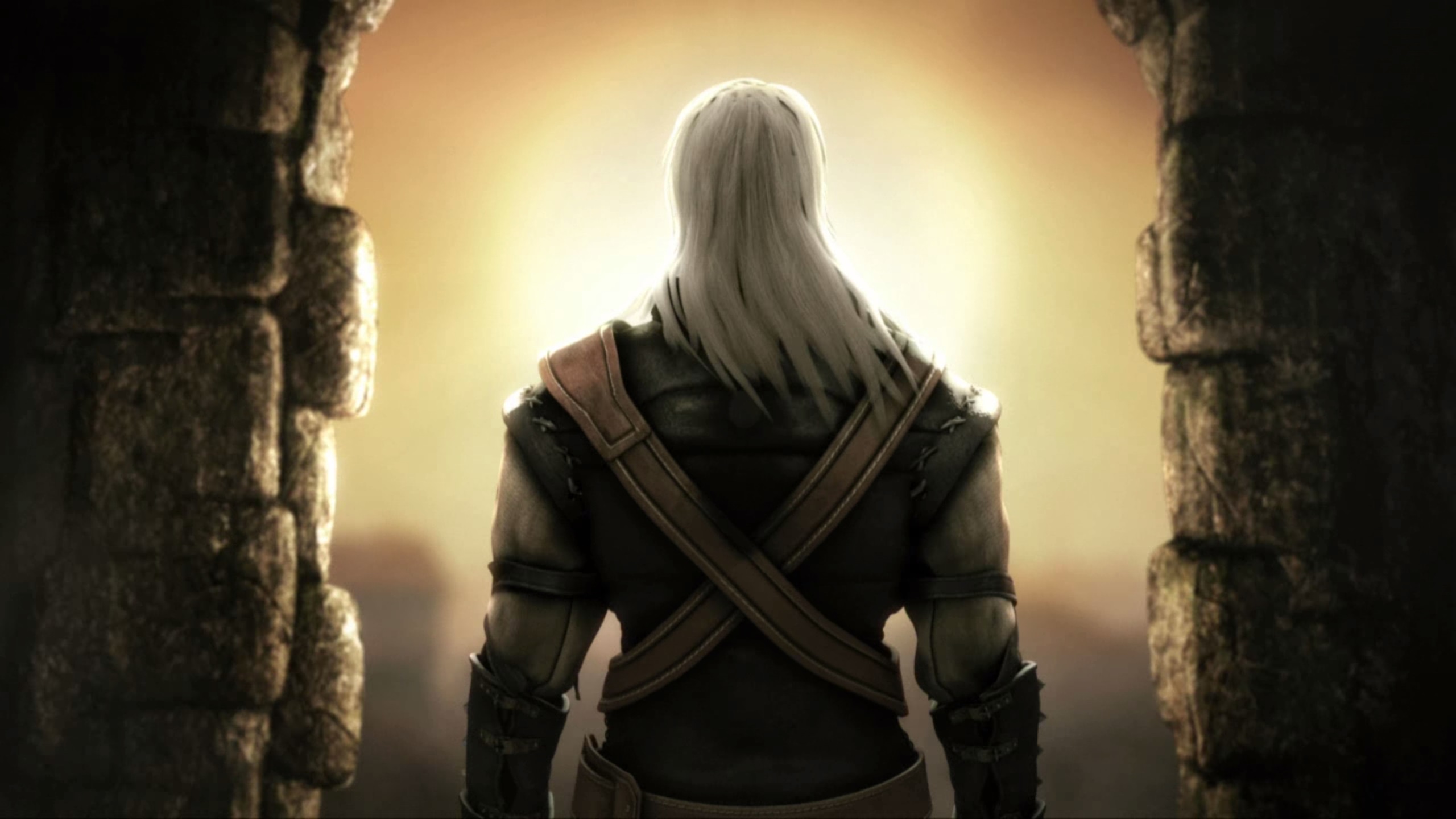
Most of us PC gamers default to buying games on Steam, but if you know CD Projekt Red, you'll know they're sister companies with digital storefront GOG. This is important: ignore your preference for Steam and just buy the dang game on GOG.
I've yet to have any problems several hours into a new save game with my GOG installation of The Witcher: Enhanced Edition. It goes on sale there plenty too, often down from its standard $10 price to under $2.
Why won't The Witcher launch?
I played The Witcher through Steam my first time and although it was a headache with UI freezes and crashes, I did make it to the end. As of 2022 though, I can't even get my Steam version of the game to launch at all. Courtesy of many other players struggling with The Witcher on Steam, here are some fixes:
If your Steam version won't launch, try these tips:
The biggest gaming news, reviews and hardware deals
Keep up to date with the most important stories and the best deals, as picked by the PC Gamer team.
- Find the launcher at "Program Files (x86)/Steam/SteamApps/common/The Witcher Enhanced Edition," and right click it, select Properties, and choose to "Run this program as an administrator" in the Compatibility settings.
- In the same settings menu, click "Run this program in compatibility mode for:" and choose "Windows 7."
- Right click the game in your Steam library and select "Properties" then add "-dontForceMinReqs" to the launch options text box.
Personally, none of the above have worked for me and I still can't get my Steam copy of The Witcher to launch. If you don't own a copy of the game yet and want to avoid a potential headache, seriously just grab it on GOG.
Install these mods
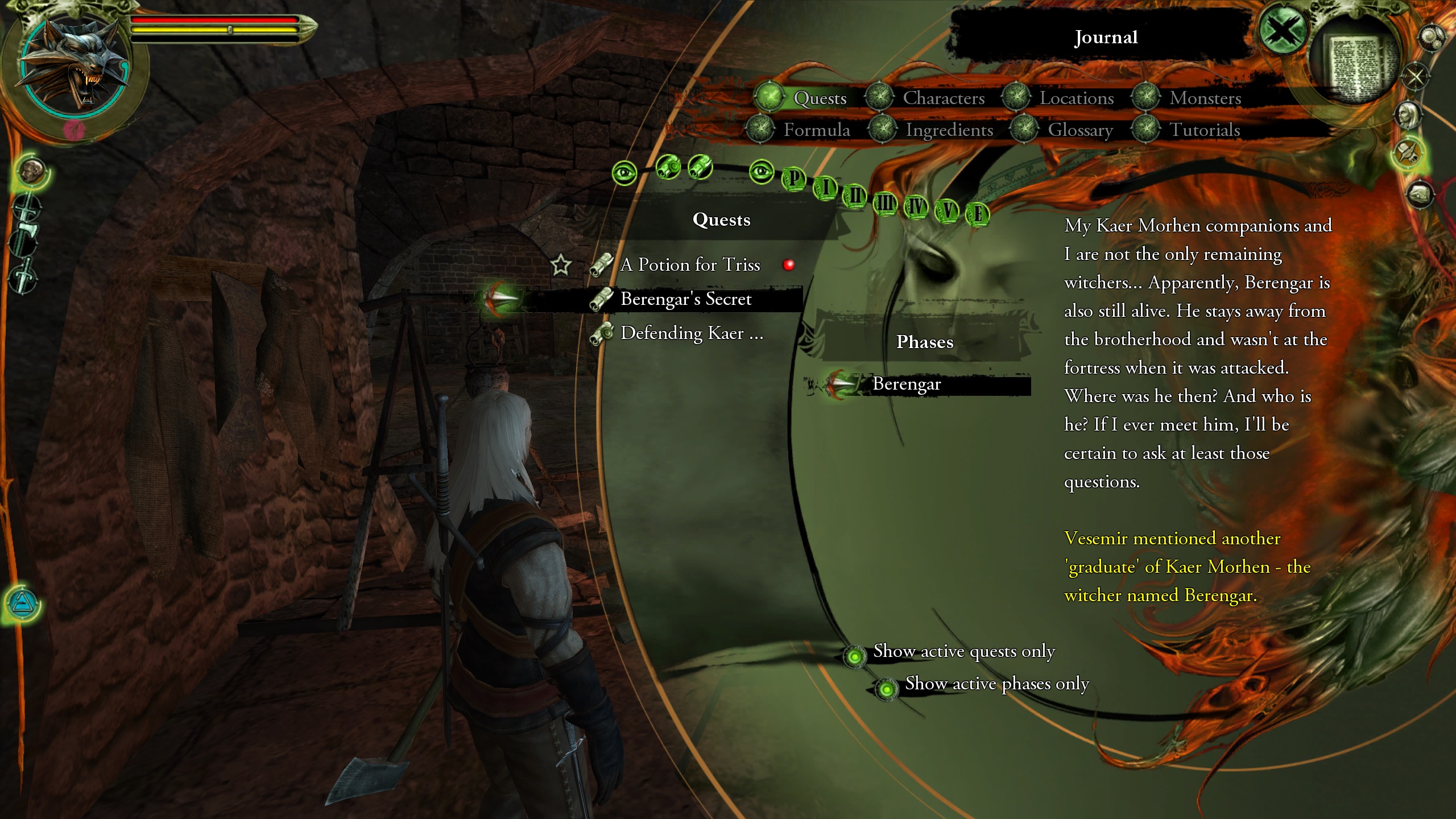
A few years back I rounded up some of the best Witcher 1 mods to sparkle up your experience, most of which are still usable. Right now though, I'm just going to recommend some visual essentials. No combat overhaul here, sorry.
The Witcher font size mods
The number one thing I'd recommend if you're playing The Witcher in this decade is that you install a mod for the fonts. I'm playing on a 2560x1440 monitor and have a corrective eye prescription worse than your mother's, so the small, serif font of the original Witcher game is almost literally painful.
My personal favorite is the Text Size Increase for Higher Resolutions which, yeah, does exactly that. There are a few variations available, but the "Balanced Text Size" is my preference for keeping the vibe of the original while making everything from quest logs to subtitles to hover effects easier to read.
My second favorite choice is the Witcher 3 UI Font which is also exactly as it sounds. This trades out the original Witcher's font for the Witcher 3's sans-serif, readable option. It does make some things in the interface feel a bit meme-ish, I'll be honest, but it's likely the superior choice for anyone who really needs improved legibility.
The Witcher texture mods
The second visual upgrade most folks look for is higher resolution textures, which anyone who's modded older games will be plenty familiar with. When it comes to The Witcher, I've found that the marginal gains on hi-res textures just don't improve the experience much. No matter how many pixels you cram onto a barrel, it's still going to be sitting in a huge open room in a way that screams "2007 environment limitations." If you're keen to go for it anyhow though, there are a few popular standard choices.
The Witcher Texturen Mod has been around for over a decade and is still a popular choice for sharpening up textures for the environment, animals, and armor. It doesn't handle character models though, so you'll want to pair it with The Witcher Hi-Res Character Models. Same as the environments, I personally find the extra pixels don't do much to obscure The Witcher's years when all the faces are still shaped like that. Alternatively there's the newer AI Upscale Textures mod which upscales the resolution on characters and environments both.
The Witcher tips
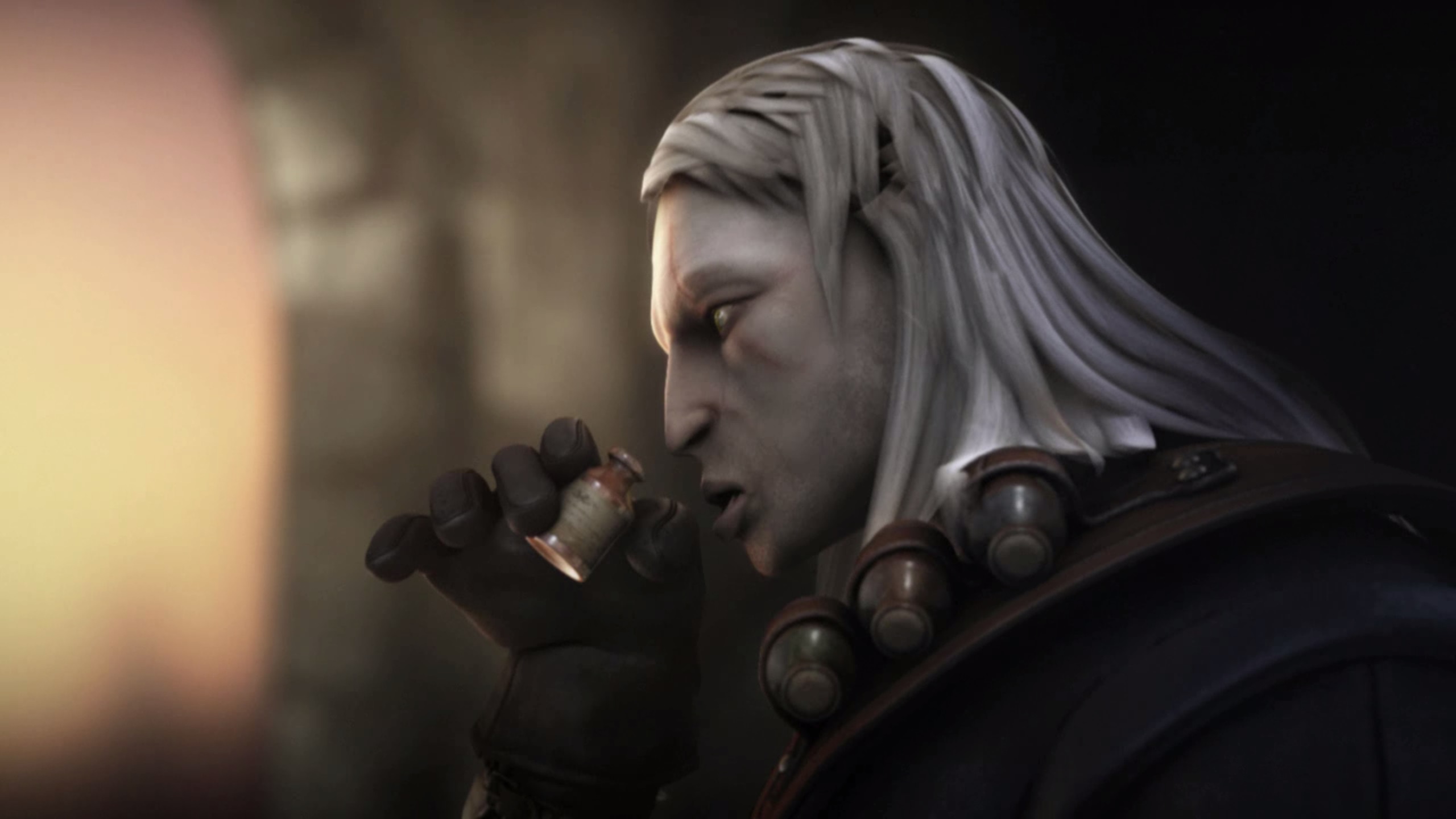
Aside from all the setup, there are a few things you'll want to know about how The Witcher works. Sometimes the tutorials gloss over specific details and other times you just don't get tripped up by a thing until you're 10 hours in and have forgotten that tutorial from hour one.
Fundamentally though, save often. That's stock-standard advice for any older game, but seriously. The Witcher does have auto-saves, but you should also do a manual save (or quicksave with F5) before big fights and save every hour regardless. You really don't want to wind up outside a boss fight you can't seem to beat and look back at your save slots to see the last time you saved in town to meditate and make potions was four hours ago.
The Witcher's combat system is fiddly
The Witcher is known for its particularly quirky sword combat system that relies on correctly timing your sword strikes to achieve combos. The tutorials early in the game gloss over an important detail: It's rhythm-based, not random. You're meant to click to swing when you see your sword icon flaming, which follows a recognizable cadence. You should get the feel for this in the first couple hours.
After the tutorial, you'll be off fighting glowing green Barghest dogs over and over with three-swing combos so you should acclimate to the swing pacing. Oh, and if you're swinging and missing an enemy repeatedly, switch your combat style to either "strong" with Z or "fast" with X.
Remember to brew potions
When you start The Witcher for the first time, it will have you choose a difficulty and explain that the normal difficulty doesn't require heavy potion usage while hard mode does. Be skeptical of this advice. A well-prepared witcher is a still-breathing witcher.
Even on normal you'll find yourself in some tough fights that really benefit from health regen and other effects. Use oils on your swords that provide damage buffs against certain enemy types whenever you know what you'll be fighting. Keep a handful of Swallow potions for health regen and Tawny Owl for endurance regen (to cast signs) on hand at all times and supplement with more specialized things like the Cat potion for night vision as needed.
Read your books
Speaking of specialty potions, don't forget to read all those books in your inventory by right-clicking on them. It's easy to ignore them by accident. Some will be potion recipes you've looted. Others are bestiary info required for specific contracts and quests. Check merchants for new books while you're shopping too or else you may miss out on ones that unlock those prerequisite journal entries.
Day and night do matter
The Witcher does explain its day and night system, but you may forget its importance until you suddenly get to one of a few specific quests, wondering why on earth nothing is happening when you're at the spot indicated by the quest marker. Check your quest details to be sure a time of day isn't mentioned and get yourself to an inn or fire to meditate and pass the time faster if needed. Also, some quests can only be initiated at certain times of day (several in Chapter 2), so make sure you aren't only exploring Vizima at night.
Don't miss these quests
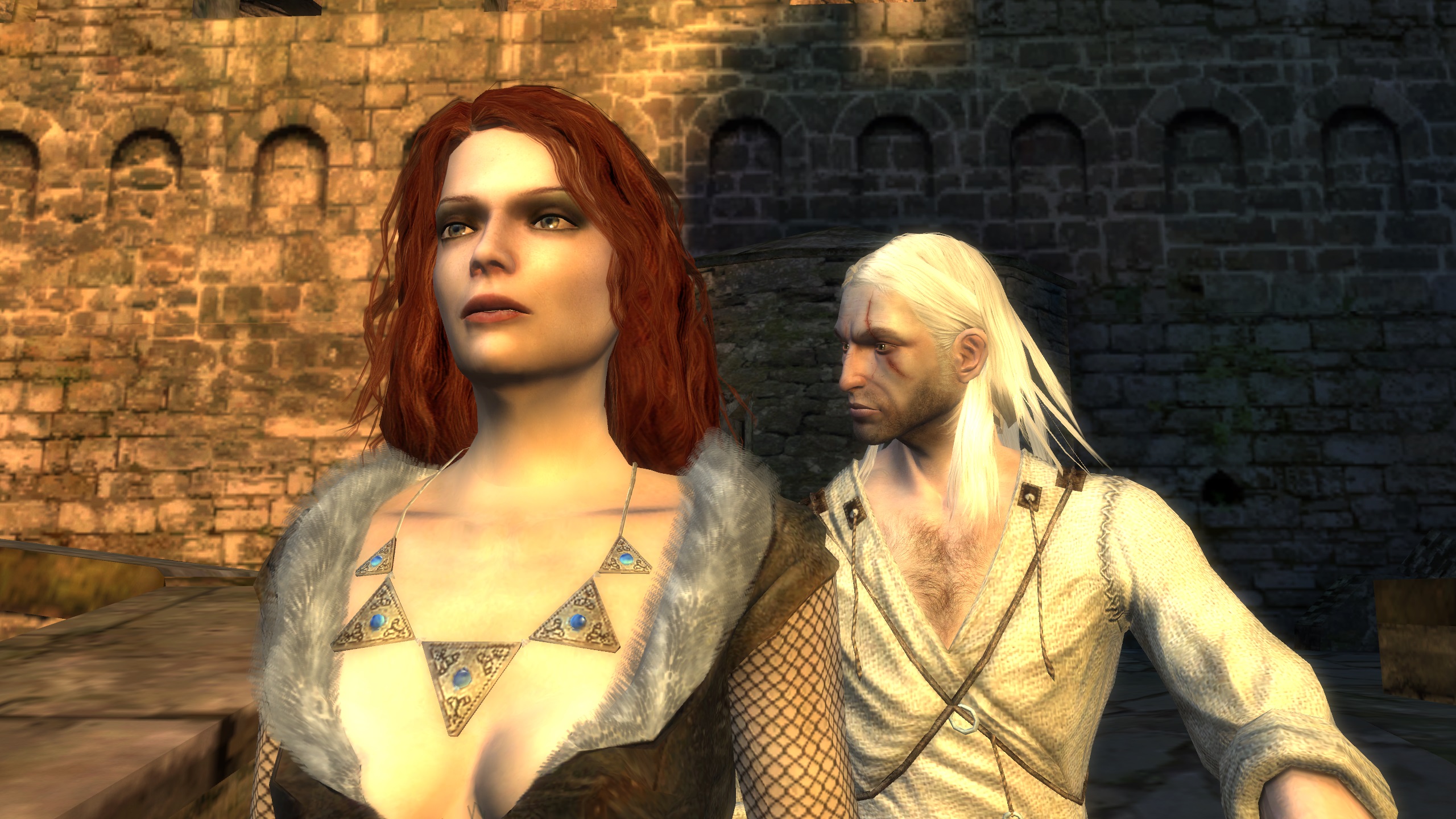
The Witcher's quest log is pretty helpful, but there are several missable quests throughout the story that you'll likely want to catch. A few don't actually get added to your quest log when you'd expect, and others you'll be locked out of by doing quests in the wrong order.
The King of the Wild Hunt
The Wild Hunt is a recurring theme in The Witcher series and you'll find early on that Geralt seems to keep having brushes with the king of the hunt. If you want to steep in the lore and clues, you won't want to miss these optional quests:
- Dead Hand of the Past: Given by Declan Leuvaarden at the Outskirts Inn during chapter one.
- Hunting the Wild Hunt: Given by the Hermit in the fields in chapter four.
Monster trophy quests
There are 10 special monastery trophy quests in The Witcher, two per chapter. The Royal Huntsman (and two other characters) will give you information on each, but they usually don't get added to your quest log until after you've killed them, annoyingly. Here are all the major trophies you'll want to check off:
- Chapter 1: Nadir, a drowned dead near the old mill. Ozzrel, an alghoul in the crypt.
- Chapter 2: The greater cockatrice in the Temple Quarter sewers. An archespore called Coccacidium that spawns all over the swamp.
- Chapter 3: Voref the wolf at night in the swamp. Moa a royale wyvern near Wyvern Island in the swamp.
- Chapter 4: Teyu, a vodyanoy priest outside Murky Waters. Ureus the cemetaur in the crypt in the fields.
- Chapter 5: Vesper, a garkain on Cemetery Island. Lilly, a bruxa also on Cemetery Island at night.
Boxing and dice quests
Like in The Witcher 3, Geralt can fight a series of increasingly difficult boxing matches. Almost all take place in a tavern, one per chapter, so those are easy to find. The one you might miss (though it is optional) is a fist fight with Eskel in the prologue. Be sure to tell Triss you have more things to do after giving her a potion in Kaer Morhen and go find Eskel in the armory.
There's no Gwent in the original Witcher game, but you can compete in dice poker instead. Make sure to take the dice box you'll loot in the Outskirts to Zoltan and he'll teach you the game. You'll need to beat three novice players, four professional, and three sharpers throughout the game before challenging the reigning dice legend. Here's who you can play against:
- Novice: Zoltan, Mikul, Odo, Hasten Brogg, Elven convict, Carmen, Vaska, a Gardener.
- Professional: Thaler, Munro Bruys, Roderick de Wett, Velerad, Hierophant, Tobias Hoffman, Julian, The Hermit.
- Sharper: Koster, Dandelion, Chireadan, the Gambling Ghost.
- Legend: met in the castle in chapter five.
Playing against three of the four Sharpers is the toughest to pull off. You can try to snag a match with Koster in chapter 3. You'll find the rest in chapter 4. The gambling ghost specifically turns up during a main quest in chapter 4 if you've trusted Triss instead of Shani to care for Alvin.
Other missable side quests
- Chapter 3: Complete Six Feet Under and Echoes of Yesterday before attending the Posh Reception quest, which will hurry you to the end of the chapter if done too quickly.
- Beauty and the Beast (Chapter 3): A classic witcher monster quest given by Carmen at the swamp landing.
- Blue Eyes (Chapter 3): An investigation quest given by Patrick de Weyze at the New Narakort Inn.
- Temptation (Chapter 4): Another classic quest given by the blacksmith's wife in Murky Waters.
- The Green March (Chapter 5): A quest that won't appear in your log, completed by talking to and trading items with the elder druids in their cave in the Swamp Cemetery.
- Mud and Velvet (Chapter 5): Speak with Antoinette before leaving the castle or else miss your chance for this quest.

Lauren has been writing for PC Gamer since she went hunting for the cryptid Dark Souls fashion police in 2017. She accepted her role as Associate Editor in 2021, now serving as self-appointed chief cozy games and farmlife sim enjoyer. Her career originally began in game development and she remains fascinated by how games tick in the modding and speedrunning scenes. She likes long fantasy books, longer RPGs, can't stop playing co-op survival crafting games, and has spent a number of hours she refuses to count building houses in The Sims games for over 20 years.

